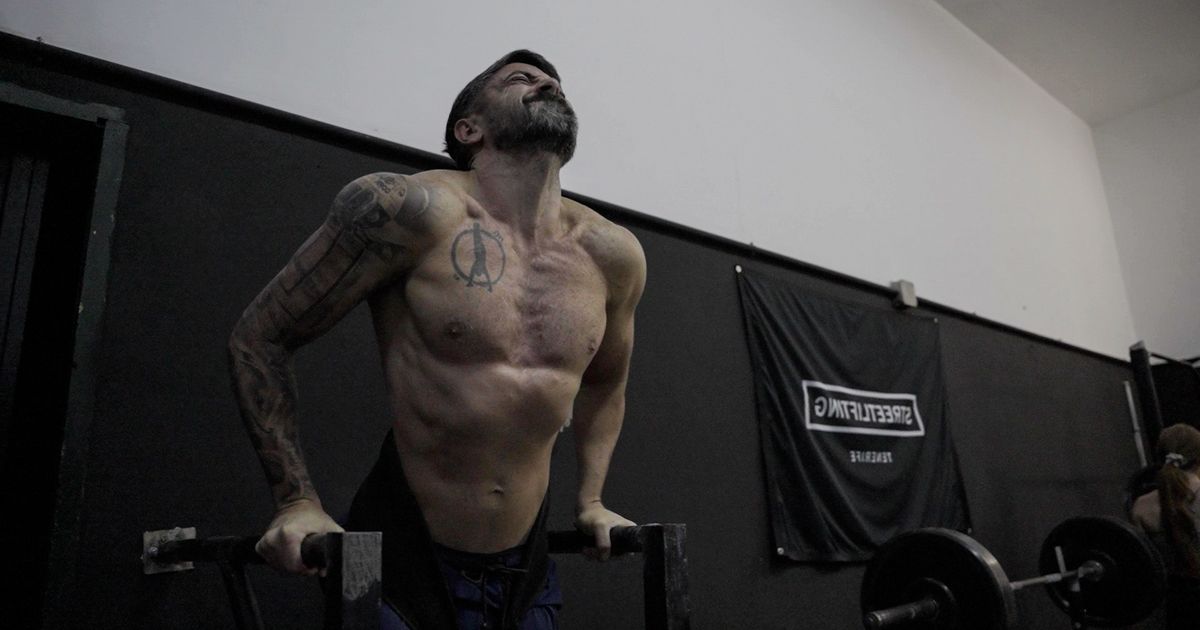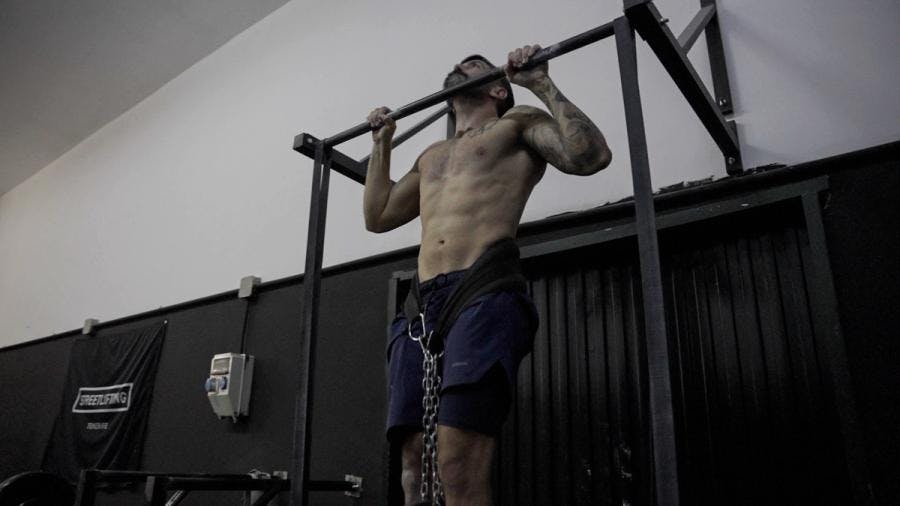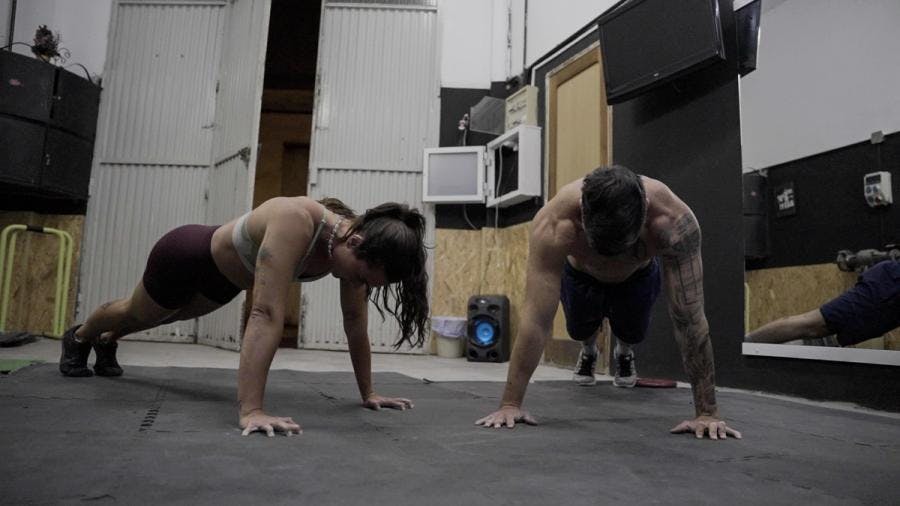
What is muscular failure?
To begin, let's define what muscle failure is. There is no fully agreed upon definition currently, but it is understood that muscle failure is the moment in which, during a certain exercise, your muscles do not allow you to complete one more repetition. Even if you try with all your might. This is usually technically called momentary muscle failure or volitional failure.
Although, as good calisthenics athletes that we are, it is worth clarifying the issue of technique. It is true that sometimes, by completely sacrificing the exercise technique, using kipping, inertia, swings and so on, we can get some extra repetitions. But this is not recommended since it would involve other muscles that are not the main ones in the exercise and poses a high risk of injury.
It is very typical that at that moment of trying to scratch one more repetition you make some bad movement with your neck or back and it causes you to pull a muscle, in addition to the fact that you are simply cheating the movement. Therefore, it is recommended that if we reach failure, it is always trying to maintain the correct technique in the exercise. This is commonly known as a technical failure.
The clearest way to identify muscle failure is by looking at the speed of the concentric part, that is, the speed of the part of the repetition where you have to contract the muscles involved and they shorten. If you record a video in which you do a set to failure, you will be able to see that the speed of the negative remains more or less stable, but the concentric slows down little by little, slower and slower, to the point that you cannot even move. You can't take it anymore and you fail.

Therefore, there you already have a first clue to identify when you are really approaching muscle failure, when you see that the repetitions begin to make you noticeably slower than at the beginning of the series. When we are at that point close to muscle failure is when we have to recruit the greatest number of muscle fibers and therefore is when we will give the muscle a greater growth stimulus. But before looking at more practical aspects, let's see what the scientific evidence says on this topic.
Scientific basis
For this we have a fairly complete meta-analysis of 15 studies in which reaching failure was compared with not failing for the result of muscle mass gain. The conclusion is clear, reaching muscle failure does not provide significant advantages with respect to reaching close to muscle failure, but, however, it does provide a clear advantage with respect to reaching far from muscle failure. This agrees with the rest of the scientific evidence on hypertrophy, which recommends that we reach 80 – 90% of our muscle failure, this means getting to, at least, 3 or less reps away from muscle failure.
What has always been clear is that staying too far from failure is a pretty bad strategy for building muscle, except in beginners, now we will look at it in more detail.
When and how to use it
In this way we reach the moment in which we can ask ourselves the question: is there any point in using muscle failure? And if so, how and when to use it?

The first thing to make clear is that for beginners who have been training for a short time, it seems clear that muscle failure should never be used. It is proven that beginners generate greater muscle damage with lower intensity, therefore they can work further from failure and obtain optimal results. If a beginner who has been training for a short time uses sets to failure, what he is going to get is terrible soreness that will make him hate training and his body will dedicate all its resources to healing that damage rather than generating hypertrophy.
That said, in athletes who have been training for at least 3 months, it is useful to use muscle failure, for two very specific reasons: 1. You must know where your muscle failure is and 2. You must be effective in reaching that muscle failure.
As we have seen before, what we are really interested in is working close to failure, rather than reaching it, but if you never test where your muscle failure is in the different exercises, nor practice reaching it, you will most likely underestimate where your muscular failure is.
For example, it has been proven in studies with experienced athletes that when they think they are at 80 - 90% of their capacity, that is, when they think they have between 3 and 1 repetitions left to reach failure, they really had between 6 and 8 left. This means that if you are not used to testing your muscle failure, you are going to be very bad at estimating how much you have left to reach it.
Therefore we conclude that it is important that you regularly do at least some series of some of your exercises reaching muscle failure, so that you maintain a certain real knowledge of where there is that failure and you can make better estimates to work near it.

The second reason is to be effective at reaching failure. It is very common, especially in athletes with less experience, that when they try to reach failure they are noticeably far from it, even if they really make an effort to achieve it. This is because your brain and nervous system are not used to trying to squeeze out more and more repetitions when you are already fatigued, simply due to a lack of practice.
The more experience you have doing sets to failure, the more ability you will have to really reach the true potential of your muscles and nervous system, and therefore the more useful both these sets and those you do approaching 80 or 90% of your capacity will be.
After analyzing these two key points, we come to the conclusion that for hypertrophy, we must work most of the time with sets close to our muscle failure. But it is convenient for us and it will be very beneficial for us to include some series to failure in our training.
To put it into practice, my recommendation is that you do a set to failure in one of every two workouts for a specific muscle group, for example a set to failure in one of every two push workouts. And that you vary which exercise you do it in.

Furthermore, I recommend that this sets to failure be the last of the exercise in question, so that it does not reduce your capacity too much in the rest of the sets of that exercise. This way, as we have seen, you will have a clearer notion of whether you are really working close to failure and you will have more ability to squeeze in repetitions until you reach it.
What I would not recommend is to reach failure in all the sets or all the exercises, since every time you do it you will accumulate a lot of fatigue in the muscles involved and the nervous system, and this fatigue applied in excess can accumulate and affect performance of the rest of the exercises and sessions, so it could become counterproductive.
Strength
When it comes to strength training, the evidence tells us that it is not optimal to use muscle failure, so in the same way if your training is strength-oriented, I recommend that you use it sporadically so that you have a clearer notion about what your actual capacity is, but certainly don't use it more frequently than that.
Before finishing, let you know that we have released a new Calisteniapp update with a V-sit training program, 10 new free routines and 25 new exercises, take a look.
Autor

Yerai Alonso
Cofundador de Calisteniapp, referente en calistenia y el street workout en Español. Con más de una década de experiencia, es creador de uno de los canales de YouTube más influyentes del sector. Autor del libro La calle es tu gimnasio, campeón de Canarias y jurado en competiciones nacionales e internacionales.
Junte-se ao nosso boletim informativo
NOVOS ARTIGOS TODA SEMANA
Aprenda tudo o que precisa saber sobre calistenia
Calisteniapp
Comece a treinar calistenia e treino de rua
